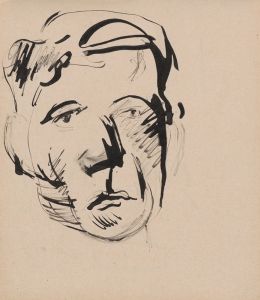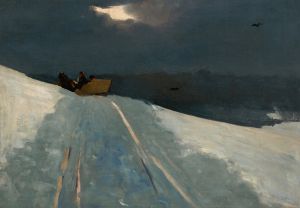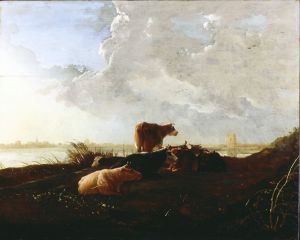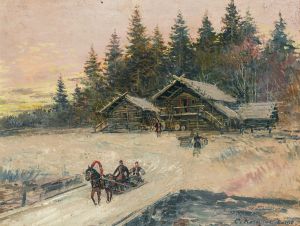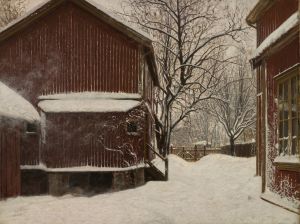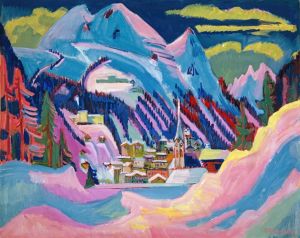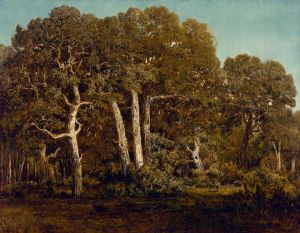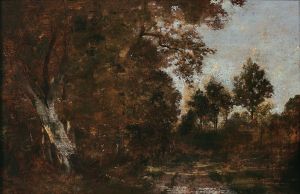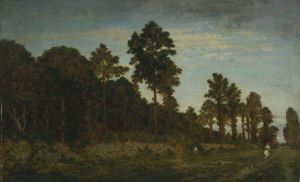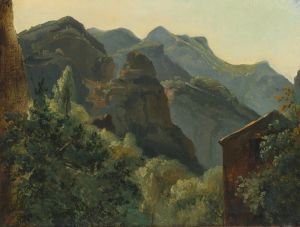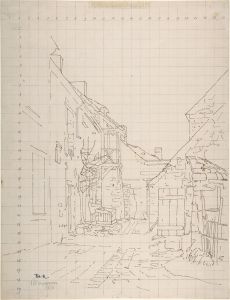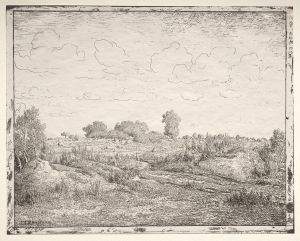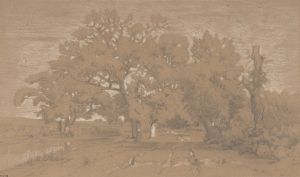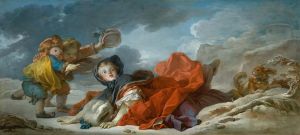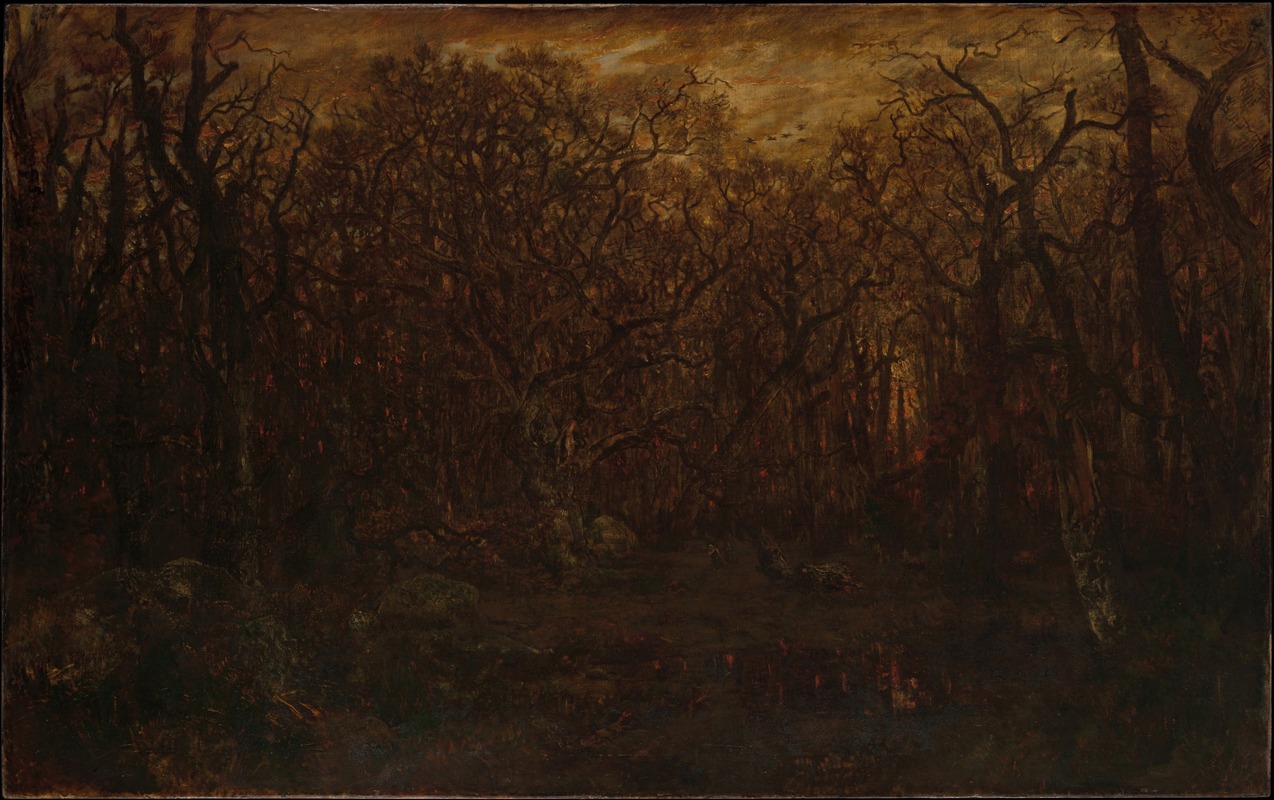
The Forest in Winter at Sunset
A hand-painted replica of Théodore Rousseau’s masterpiece The Forest in Winter at Sunset, meticulously crafted by professional artists to capture the true essence of the original. Each piece is created with museum-quality canvas and rare mineral pigments, carefully painted by experienced artists with delicate brushstrokes and rich, layered colors to perfectly recreate the texture of the original artwork. Unlike machine-printed reproductions, this hand-painted version brings the painting to life, infused with the artist’s emotions and skill in every stroke. Whether for personal collection or home decoration, it instantly elevates the artistic atmosphere of any space.
"The Forest in Winter at Sunset" is a painting by the French artist Théodore Rousseau, created in the mid-19th century. Rousseau, born on April 15, 1812, in Paris, was a prominent figure in the Barbizon School, a movement named after the village of Barbizon near the Forest of Fontainebleau, where many artists gathered to paint nature directly from life.
Rousseau's work is characterized by his deep appreciation for nature and his meticulous attention to detail. "The Forest in Winter at Sunset" exemplifies these qualities, capturing the serene yet stark beauty of a forest landscape during the winter season. The painting depicts a forest scene bathed in the warm, golden light of the setting sun, which contrasts with the cold, snow-covered ground. The interplay of light and shadow in the painting highlights Rousseau's skill in rendering the natural world with both realism and emotional depth.
The composition of the painting is carefully balanced, with the trees in the foreground creating a sense of depth and leading the viewer's eye into the scene. The bare branches of the trees, devoid of leaves, emphasize the winter setting, while the soft, diffused light of the sunset adds a sense of tranquility and melancholy. Rousseau's use of color is subtle yet effective, with the warm tones of the sunset contrasting with the cool blues and whites of the snow.
Rousseau was known for his dedication to painting en plein air, or outdoors, which allowed him to capture the changing effects of light and atmosphere with great accuracy. This approach was relatively innovative at the time and influenced many other artists in the Barbizon School and beyond. His commitment to depicting nature in its true form was a departure from the more idealized landscapes that were popular in academic art circles of the period.
"The Forest in Winter at Sunset" reflects Rousseau's belief in the power of nature to evoke deep emotional responses. The painting does not merely depict a specific location but rather conveys a universal sense of the beauty and stillness of the natural world during winter. This ability to evoke emotion through landscape painting was one of Rousseau's significant contributions to the art world.
Théodore Rousseau's work, including "The Forest in Winter at Sunset," played a crucial role in the development of landscape painting in the 19th century. His influence extended to the Impressionists and other later movements that sought to capture the fleeting effects of light and atmosphere. Today, Rousseau is remembered as one of the leading figures of the Barbizon School, and his paintings continue to be celebrated for their technical skill and emotional resonance.
"The Forest in Winter at Sunset" remains an important example of Rousseau's work and is held in high regard by art historians and enthusiasts alike. The painting is part of the collection at the Metropolitan Museum of Art in New York, where it continues to be appreciated by visitors from around the world.





